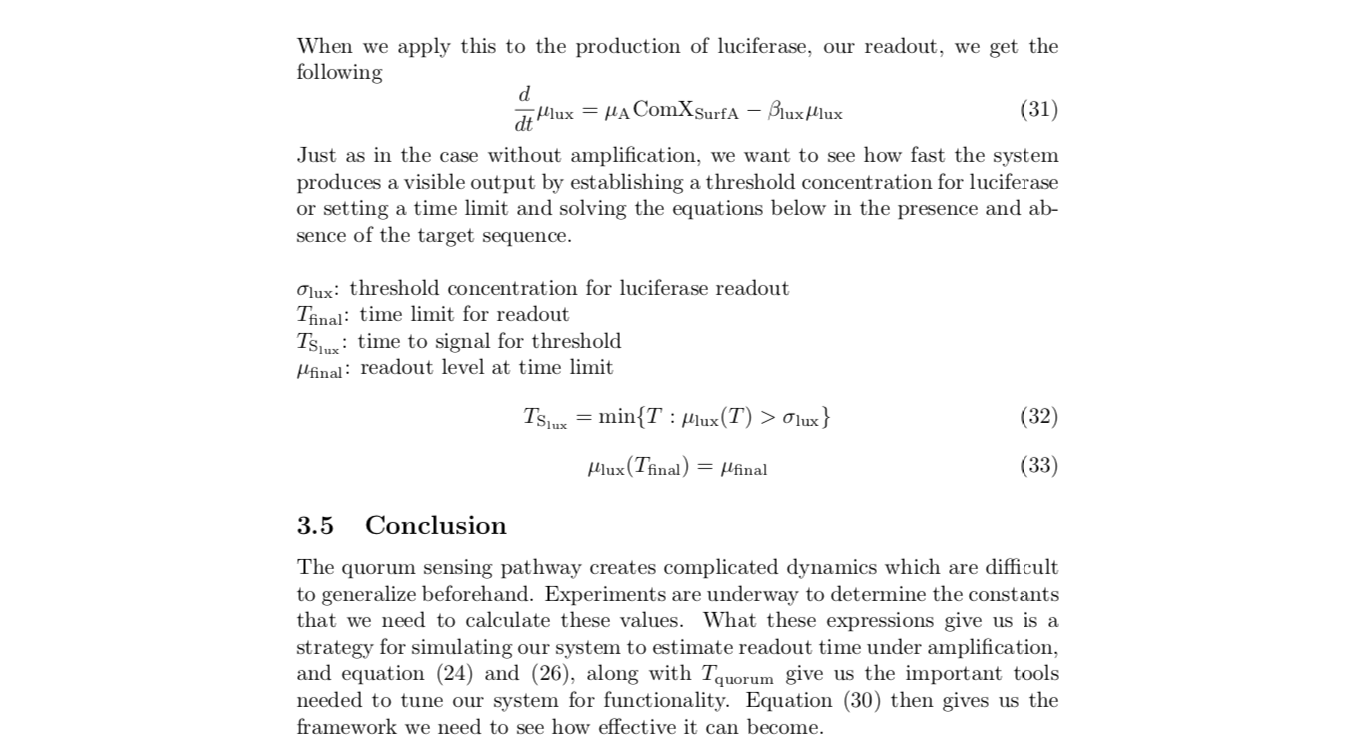Mathematical Modeling
Gaining Mathematical Insight Into Our System
This iGEM season, we were not able to get into the lab until late in the summer. This made a Modeling projects something really important to use to pursue, so that would could still test our system and gain feedback from our ideas, even if we weren't able to observe the systems working in the real world. We were able to model three different aspects of the invention mathematically, in an effort to answer the following research questions:
- How many cells will take in our target DNA?
- How do we interpret a measured survival rate for the ManP method of our system?
- What fraction of positive cases will we detect?
- What is our false positive rate?
- How fast do we expect to get a signal for our system using the toehold switch method?
- How strong do we expect that signal to be?
- How do we expect these results to change when using the ComX signal amplification pathway?
Using population statistics and differential equations to model the simple mechanics of our system, we were able to come up with strong conclusions for some questions and promising tools to further explore others.













Research question answers
- The number of cells taking in DNA depends on figures for comptence in which we aren’t certain. For ballpark estimates, we get a usable ~20% of cells
- We can graph the probability of target presence given a measured survival rate. For any realistic set of parameters, there is a clear cutoff.
- In almost all realistic cases, we will detect virtually all positive cases with very high confidence
- In almost all realistic cases, we will have virtually no false positives, with high confidence that this is the case
- The dynamics of toehold switches are hard to model, but simulation in collaboration with Edinburgh iGEM will lead to preliminary estimates
- The total readout level is dependent on the concentration of target DNA, but once we have an estimate for that, we can easily plug it into our model to estimate the signal level of our system
- The ComX system is similarly difficult, but once we have figures for the behaviour of the system and estimates for the toehold system, we can simulate the amplification scheme easily using the tools developed in the modelling project
Conclusion
By modelling our system, we were able to establish clear and promising expectations for the performance of our ManP recombination system. By plugging in conservative estimates, we were able to show that the system almost always gives a readout which unambiguously identifies whether the target DNA is present, or not, with a false positive and false negative rate of >0.1% under realistic conditions. Even in more challenging situations, ManP Recombination promises to be an effective diagnostic. Our protein expression models were more difficult, both due to the dynamic nature of biological expression, and the lack of clear data for the parameters. Our experiments are underway to pin down that data, and in collaboation with the University of Edinburgh iGEM team, we have begun to simulate the system, and once results begin to appear, we will have powerful tools to explore our system and a framework to explore any modifications we might make in the future.

